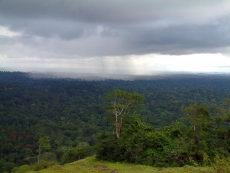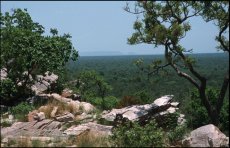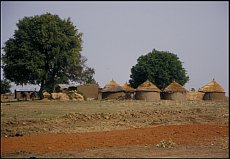|
BIOTA West Africa - Phase I (2001-2004) The first phase of BIOTA (2001-2004) was devoted to the establishment of the project's infrastructure, methodological approaches and collecting of first baseline data. As a crucial component of our participatory approach, we initiated mutual capacity building by forming tight links with our African partners ranging from local stakeholders and decision makers to co-operations and consultations with universities and ministries on the national level. In the scientific program, we jointly developed standardized sampling protocols and established comprehensive monitoring and information systems of selected animal and plant taxa on various spatial scales and under various degrees of human impact. The inventory approach is centred on the joint effort of BIOTA in establishing Biodiversity Observatories (BOs) for long-term monitoring of changes in biodiversity. All of these activities took into account the relevant socio-economic and cultural contexts.
More details...
BIOTA West Africa - Phase II (2004-2007) During the second phase of BIOTA (2004-2007) we extended and improved further our multidisciplinary approach of comparing undisturbed with anthropogenically altered habitats. Special emphasis has been given to assess human-induced large- and small-scale habitat conversions, overexploitation of natural resources, unsustainable harvesting and insufficient management practices leading to severe biodiversity erosion. We also began with the assessment of the current status and deficits of selected protected areas, which are crucial for preservation of biodiversity. We have developed first products including the successful initiation of botanical and medicinal gardens and active support of park managements by distributing necessary baseline data and a first set of recommendations for an effective management including species inventories, information material and maps (mainly for the Pendjari area, Benin).
Furthermore, we have reinforced the cooperation with our African partners and have put special emphasis on the full integration of socioeconomic, ethnological and gender aspects into our projects as well as on capacity building by conducting workshops and summer schools for masters and PhD students.
More details...
BIOTA West Africa - Phase III (2007-2010) In the third phase of BIOTA (2007-2010), we will further shift our main emphasis from a multidisciplinary to a true inter- and transdisciplinary approach. Therefore we concentrate our main research activities on two core topics: the first deals with the contemporary status of biodiversity and concepts for its sustainable conservation (see CT1), the second with land use changes and restoration (see CT2). The ultimate goal of our research in the final phase is the delivery of clearly defined, applicable products (see CT3) as the indispensable backbone for a sustainable use of natural resources and the conservation of biodiversity.
Capacity building will further be intensified among others by means of prioritising data exchange and developing specific exit strategies that enable the African partners to carry on with the achieved results of our joint projects after an end of BIOTA (see CT4). Ultimately, all of the deliverables of the third phase will be handed over to the stakeholders and decision makers, covering the full range from the local scale of rural communities to national administration and legislation, international GOs (e.g., African Union, EU), national and international NGOs and other agencies involved in CBD-relevant activities for identification of conservation priorities and policies.
Due to our very strong interdisciplinary approach in this third phase, e.g. integrating remote sensing with assessments and modelling of ecological, ethnological and socio-economical data, we have reworked the general structure and concept of BIOTA West. For the final phase, we have established now a very tightly meshed, cross-linking framework with the four main themes, so-called Core Topics (CTs) mentioned above, replacing the previous structure where contributions of working groups had been presented based on the respective disciplinary competence. Each CT is mutually interlinked with the overarching theme of conservation and sustainable use of biodiversity. A general introduction summarizes the background, rationale and state of research, and then leads to the next sub-level. Topics (T) focus on selected subjects within CTs followed by workpackages (WP), where specific questions are asked within the framework of the main theme. Furthermore, wherever applicable, links with other projects or programs are given to underline the integration of the BIOTA West activities within a broader framework.
More details...
|

Côte d'Ivoire
Rain clouds, Tai National Park
© Jens Mutke

Benin
Pendjari National Park in northern Benin
© Minnattallah Boutros

Burkina Faso
Traditional village near Fada N'Gourma
© Minnattallah Boutros
|






 Go to the WeatherNet
Go to the WeatherNet

